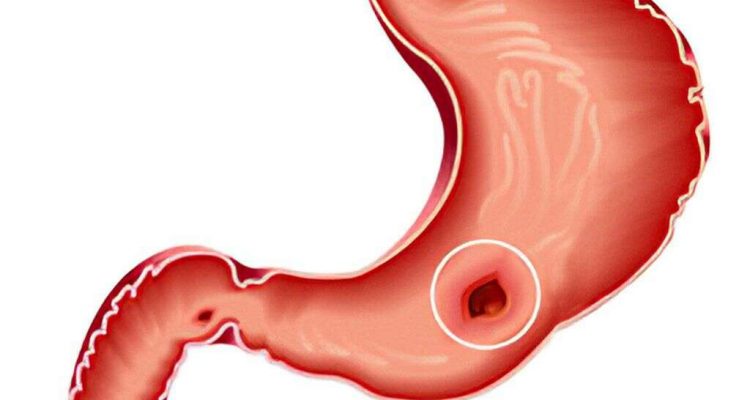The disease is characterized by a chronic course and cyclicity: the disease undermines the health of its owner for years, periods of exacerbation are replaced by deceptive calmness.
Peptic ulcer is a disease in which defects (ulcers) form in the stomach and (or) the duodenum of a person. Most often, men from 20 to 50 years old suffer from peptic ulcer disease.
The disease is characterized by a chronic course and cyclicity: the disease undermines the health of its owner for years, periods of exacerbation are replaced by deceptive calmness. Most often, the ulcer makes itself felt in the spring and autumn.
Duodenal ulcer is much more common than gastric ulcer.
Causes
The leading role in the development of the disease is played by the helical microbe Helicobacter pylori, which damages the mucous membrane of the stomach and duodenum. At the same time, this microorganism can be found in more than 80% of the inhabitants of Russia, but far from all of them suffer from peptic ulcer disease.
The fact is, an ulcer does not develop without a number of additional factors:
stress, anxiety, depression. In this case, there is a violation of the functions of the autonomic nervous system with a predominance of the tone of the vagus nerve. This, in turn, causes a spasm of the muscles and blood vessels in the stomach. As a result, he remains without adequate nutrition and becomes vulnerable to the action of hydrochloric acid: the walls begin to be digested by caustic gastric juice. An ulcer is formed
poor heredity;
unhealthy diet: eating rough and spicy foods. This increases the production of hydrochloric acid.
alcohol abuse. Alcohol enhances the aggressive properties of gastric juice and reduces the protective properties of the mucous membrane.
smoking. Nicotine enhances the production of hydrochloric acid, interferes with the normal digestion of food, damages the stomach wall, and also disrupts the production of protective factors for the gastric mucosa in the pancreas .;
uncontrolled intake of certain medications (reserpine, corticosteroid hormones, aspirin).
What’s happening?
The microbe Helicobacter pylori is transmitted from person to person through close long-term contact, for example, through kissing, through common dishes and towels, as well as by non-compliance with the rules of hygiene in toilets.
Once in the stomach, Helicobacter begins to actively multiply and conduct subversive activities. It produces special enzymes (urease, proteases) that damage the protective layer of the mucous membrane (inner) of the stomach and duodenum, disrupts cell functions, mucus production and metabolic processes and causes ulcers.
Helicobacter begins to actively multiply and conduct subversive activities. It produces special enzymes (urease, proteases) that damage the protective layer of the mucous membrane (inner) of the stomach and duodenum, disrupts cell functions, mucus production and metabolic processes and causes ulcers.
How does it manifest?
First of all, the onset and development of peptic ulcer disease is signaled to a person by pain in the upper abdomen. Disturbed by night and “hungry” pains, in which a person needs to eat something in order to “extinguish” the pain.
Pain in peptic ulcer disease has a clear rhythm (time of occurrence and connection with food intake), periodicity (alternation of pain sensations with periods of their absence) and seasonality of exacerbations (in spring and autumn). It is characteristic that pain in peptic ulcer disease decreases or disappears after eating and antacids (almagel, maalox).
One of the common symptoms of peptic ulcer disease is heartburn, which usually occurs 2-3 hours after eating. Nausea, vomiting, “sour” belching, constipation – these nonspecific symptoms can also indicate an ulcer. Appetite in peptic ulcer disease is usually preserved or even increased, the so-called “painful feeling of hunger.”
Keep in mind, in some cases, the ulcer may be asymptomatic!
If the disease is left untreated, the ulcer https://en.wikipedia.org/wiki/Peptic_ulcer_disease defect extends deep into the stomach wall. This process can end with life-threatening complications: perforation (perforation), in which a through hole forms in the wall of the stomach or intestine, or bleeding.
